17 November, 2001
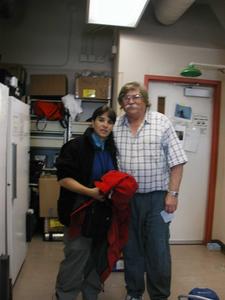
When I got back to McMurdo yesterday, I immediately attached myself to a computer for the night in order to send out journal entries and try to answer 106 emails. Since I have limited computer connections in my field camp, I opted to stay up all night to take advantage of this link with the outside world. I was on my way to bed after lunch when I met Dr. Art DeVries at the Crary Lab. Although I look tired in this picture, I was quite excited to give up a little more sleep in order to watch him dissect a fish. Before coming to Antarctica, I had read about Dr. DeVries' study of antifreeze being found in fish living in the Antarctic waters. I will regard this opportunity to watch Dr. DeVries dissect as one of the "unexpected" highlights of my Antarctic experience. Dr. DeVries has been coming to Antarctica for the past 30 years. His project has led to the discovery of antifreeze in the fish, which enables the fish to survive the cold Antarctic waters.
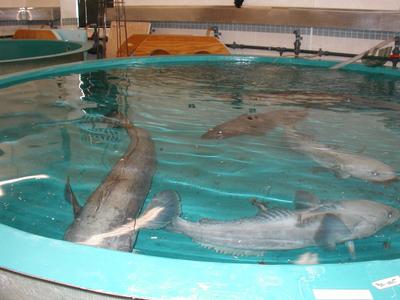
Dr. DeVries showed me the Mawsoni fish, or "Antarctic cod", kept in the tank in the Aquarium at the Crary Lab. They can live to be 40 years old and can weigh several hundred pounds. Dr. DeVries has tagged nearly 5000 Mawsoni fish since 1972. Recently (February 28, 2001), a New Zealand fishing boat crossing the Antarctic convergence (where cold Antarctic water meets the warm water from the North) caught a 74 pound (33.5 kilograms) tagged female Antarctic cod. This Mawsoni was possibly tagged by DeVries in 1997. Although thirteen of the tagged Mawsoni have been recaptured in McMurdo Sound, this fish was the first tagged fish to be caught elsewhere. It was 500 miles from McMurdo, north of Cape Adare, which is east of Balleny Islands. This showed evidence of long distance movement.

Dr. DeVries let me assist while he withdrew the blood from one of the Mawsoni. The blood is drawn to make serum, which will be used for further analysis. Dr. DeVries let me assist while he withdrew the blood from one of the Mawsoni. The blood is drawn to make serum, which will be used for further analysis.
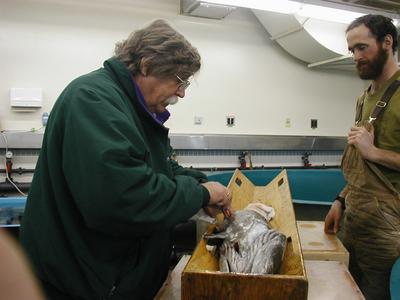
Dr. DeVries dissecting the Mawsoni fish.
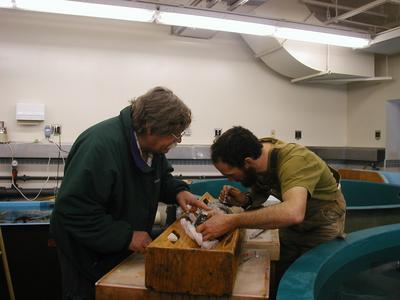
Dr. DeVries and Ben (one of the divers who works in the lab with Dr. DeVries), were in the process of dissecting the fish for future study. These fish in Antarctica have adapted over time to survive in these frigid waters by making antifreeze to withstand this extreme cold water environment.
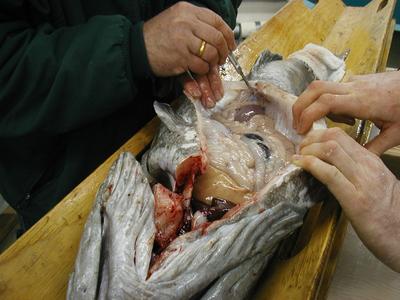
As Dr. DeVries dissected, he pointed out the different organs in the Mawsoni fish.
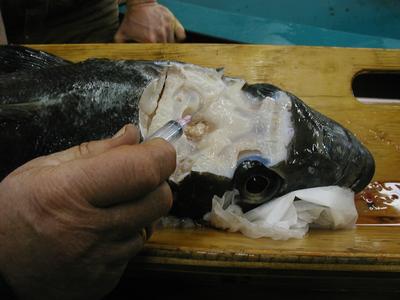
Dr. DeVries found that antifreeze was also in the brain of the fish. He is doing further research on this. One thing that I'm noticing as I work with scientists is that one answer or discovery will lead to other questions to investigate.
Contact the TEA in the field at
.
If you cannot connect through your browser, copy the
TEA's e-mail address in the "To:" line of
your favorite e-mail package.
|
